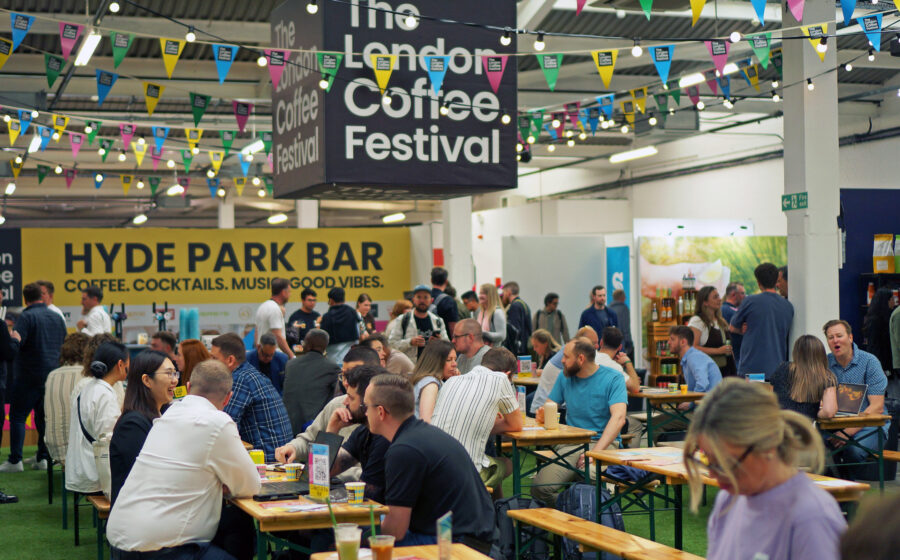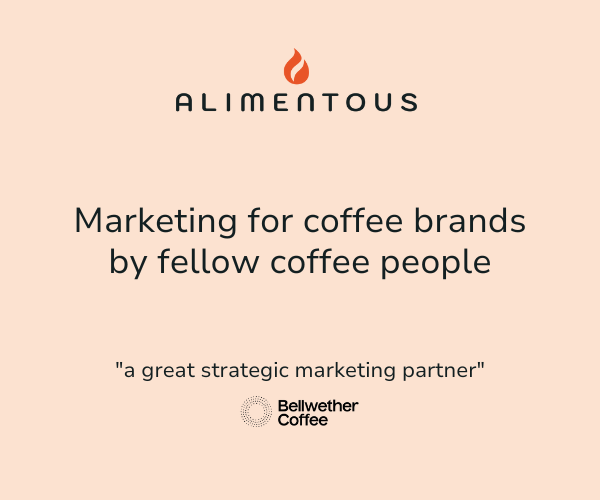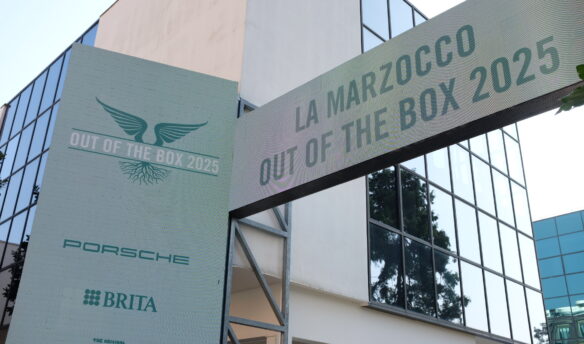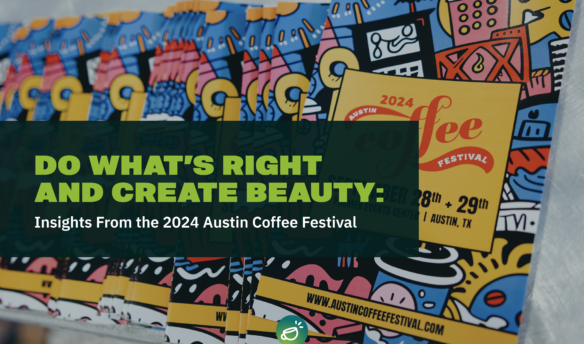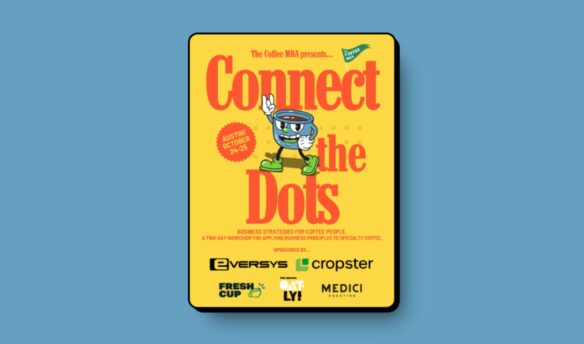Last weekend, the London Coffee Festival returned to East London’s Truman Brewery event space. Since its founding in 2011, the festival has become the largest annual coffee convention in the United Kingdom, attracting thousands of attendees and hosting some 260 exhibitors and guest roasters, plus a schedule of panel discussions, coffee competitions, and more.
That makes it an excellent place to take the temperature of the British coffee industry—and to discover the brands, technologies, and experts who are powering its latest innovations.
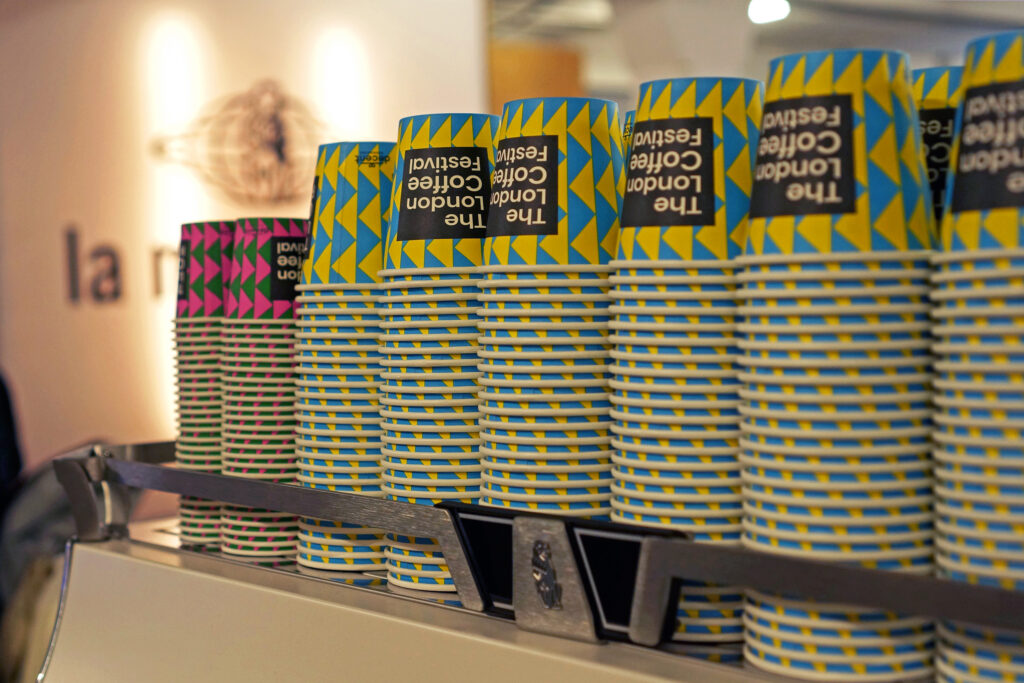
On the festival’s opening day, I observed an industry that seemed determined to move forward, even while being keenly aware of the many overlapping challenges that it faced. Topics like the soaring cost of coffee, the growing impact of global warming, and chaotic tariff policies cropped up repeatedly in talks and personal conversations.
And yet, the overall picture was of a coffee industry that felt more exploratory and technicolored than ever. I spotted uncommon processing techniques, new product formats, boldly flavored signature drinks, and the presence of underrepresented origins, all of which reinforced a spirit of openness and experimentation.
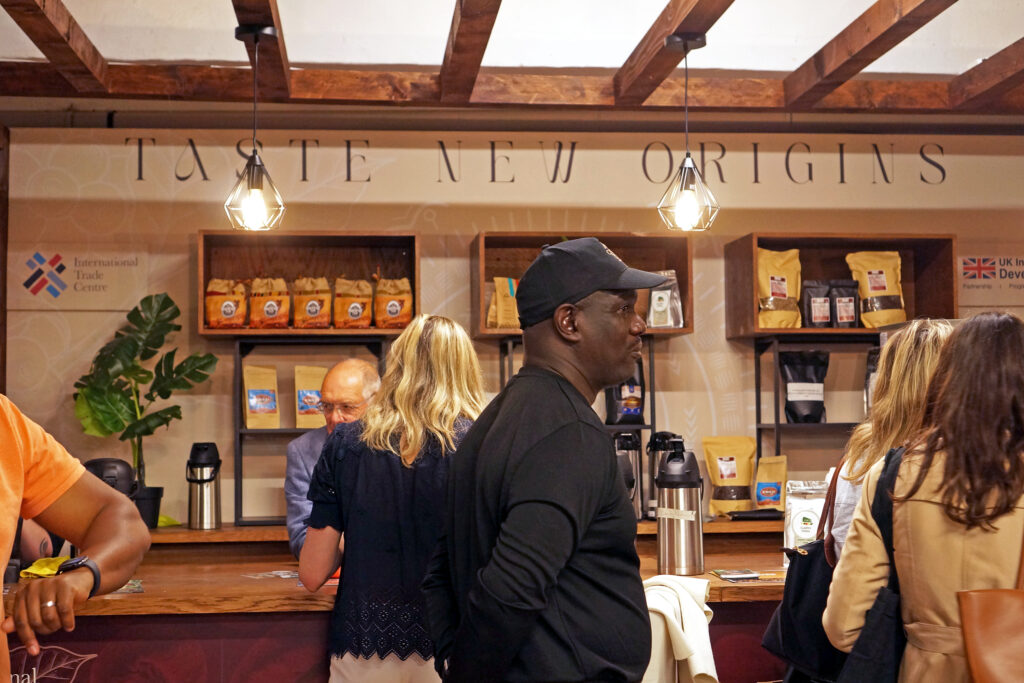
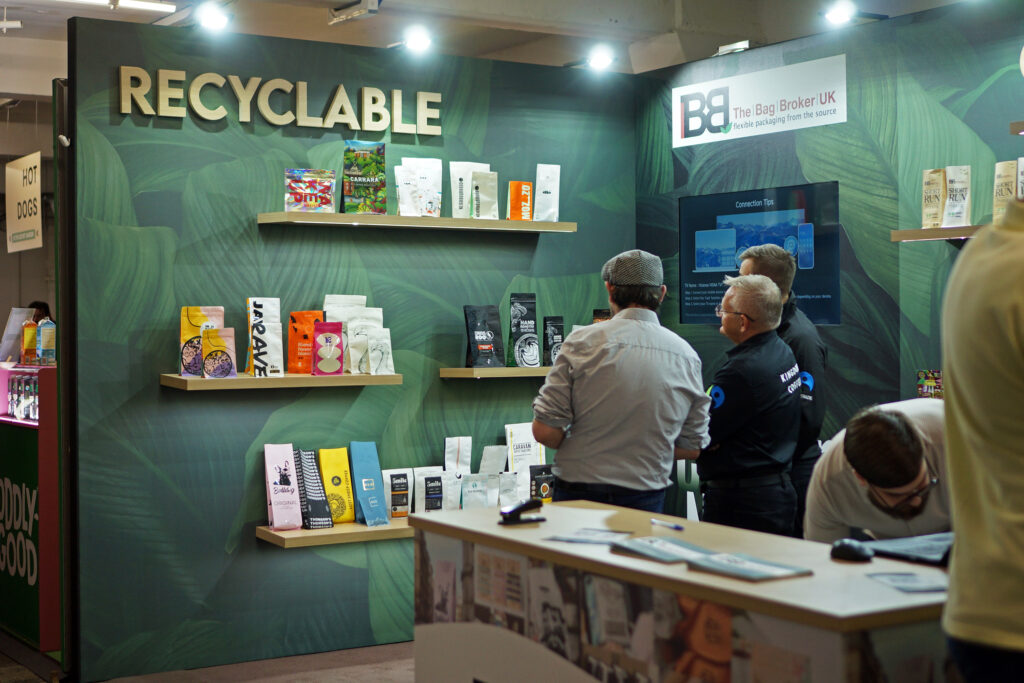
A number of themes emerged during my visit, from the growing emphasis on ready-to-drink (RTD) beverages to technology-driven water profile customization and recyclable or compostable packaging. But the following five learnings represent the most prominent throughlines I observed—and offer a good indication of where coffee is heading.
Flavor Is Major
Flavor has been the biggest story in other drinks sectors for years. That’s particularly true for beverage alcohol categories like hard seltzers and flavored malt beverages, where bold, easily defined flavors are more important to shoppers than any other purchasing factors. As Marie Solis put it in a recent New York Times article, this is an “era of hyperflavor, in which many of us seek out increasingly elaborate combinations of ingredients and spices.”
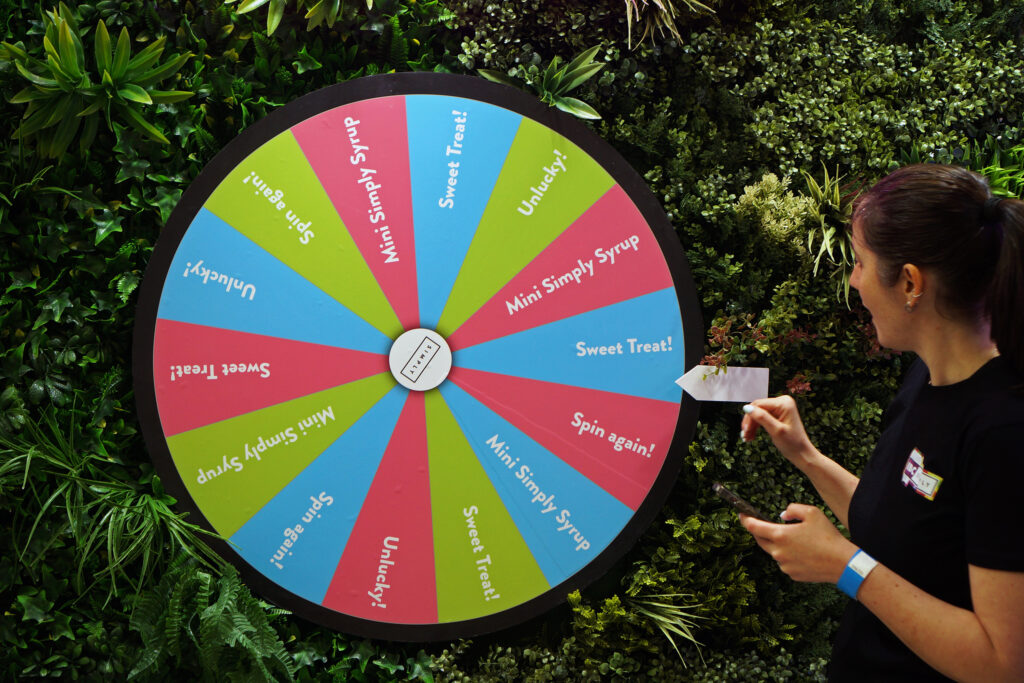
It didn’t surprise me, then, to see a similar emphasis on flavor across the London Coffee Festival.
That focus was firstly apparent in the coffee itself, with a number of roasters highlighting innovative processing methods, from natural ice fermentation to koji-processed coffee. Many also used vivid packaging designs and maximalist tasting notes—I saw everything from “lemon tart, peach rings, wildly floral” to a single coffee promising notes of “prune, blueberry, blood orange, bourbon whiskey, dried pineapple, maple syrup, and liquorice candy”—to communicate about flavor.
The most striking coffee I tried all day was Doña Delfina, a Colombian Bourbon and Gesha blend from the London-based roaster Hermanos. It underwent yeast-extended fermentation, which resulted in an ultra-pronounced floral profile.
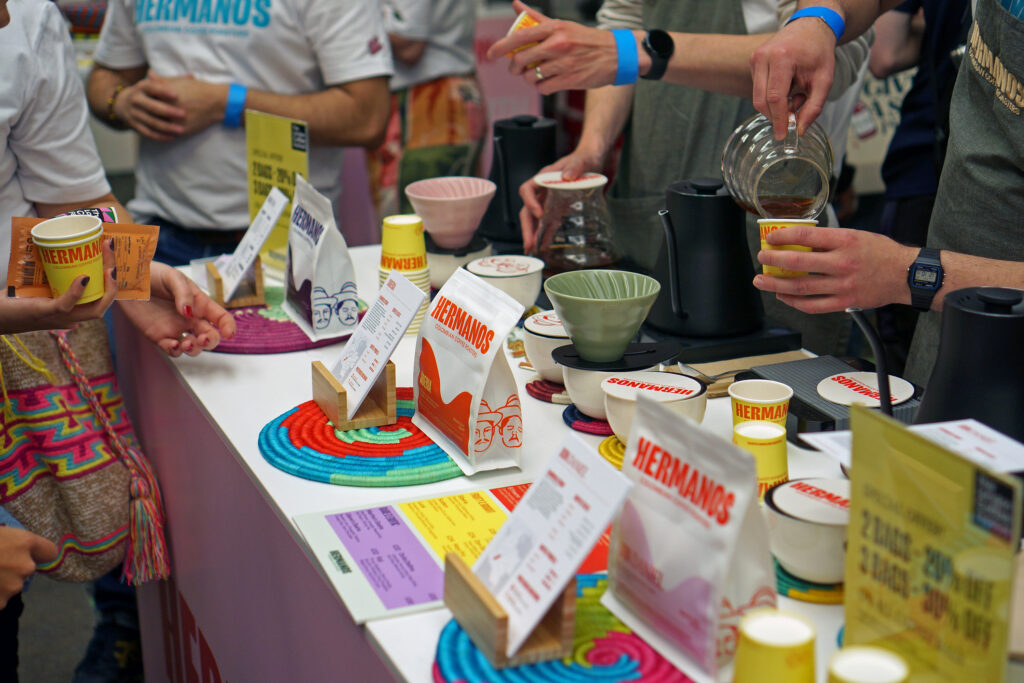
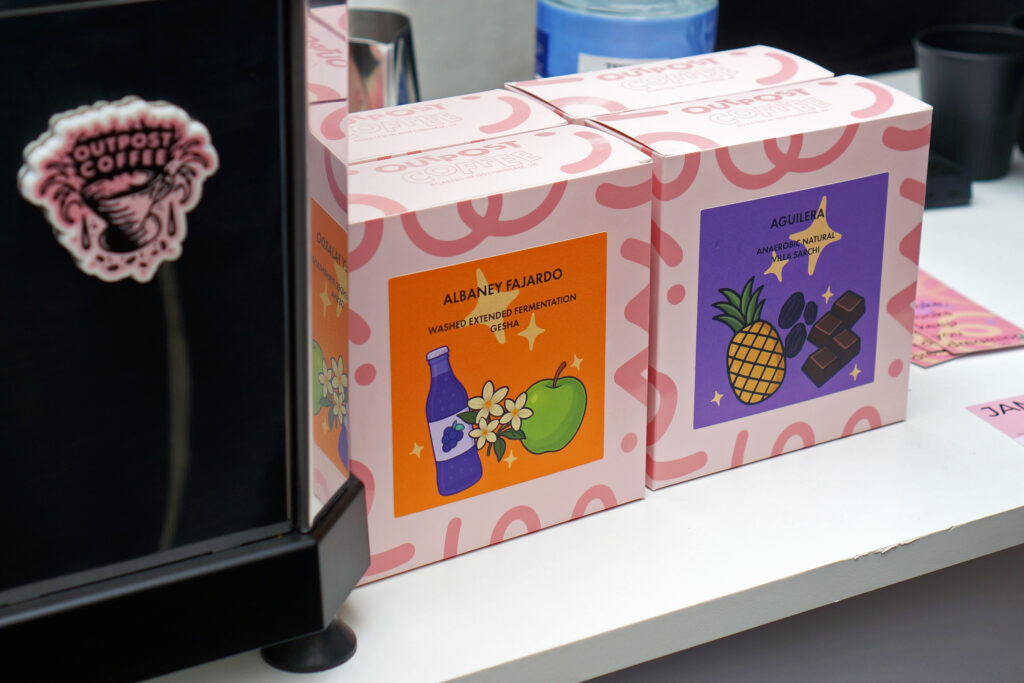
This trend also manifested in the popularity of syrups. Stands like Monin’s—which offered syrup flavors ranging from rhubarb to toasted marshmallow—were perpetually swarmed, suggesting a growing openness to flavoring agents in specialty coffee. “There’s a rising interest in using traditional flavors with modern formats, like saffron cold brew or cardamom lattes,” as industry veteran and consultant Gerd Müller-Pfeiffer put it during his talk on global coffee trends.
Signature Drinks Are On the Rise
Related to flavor, another clear trend was distinctive signature drinks—especially iced drinks, many of which verged on mixology with their cocktail-like complexity and social-media-friendly visuals. Oat milk brand Oatly even distributed a fashion-inspired lookbook, featuring recipes ranging from on-trend iced horchata lattes to lacto-fermented blueberry matchas.

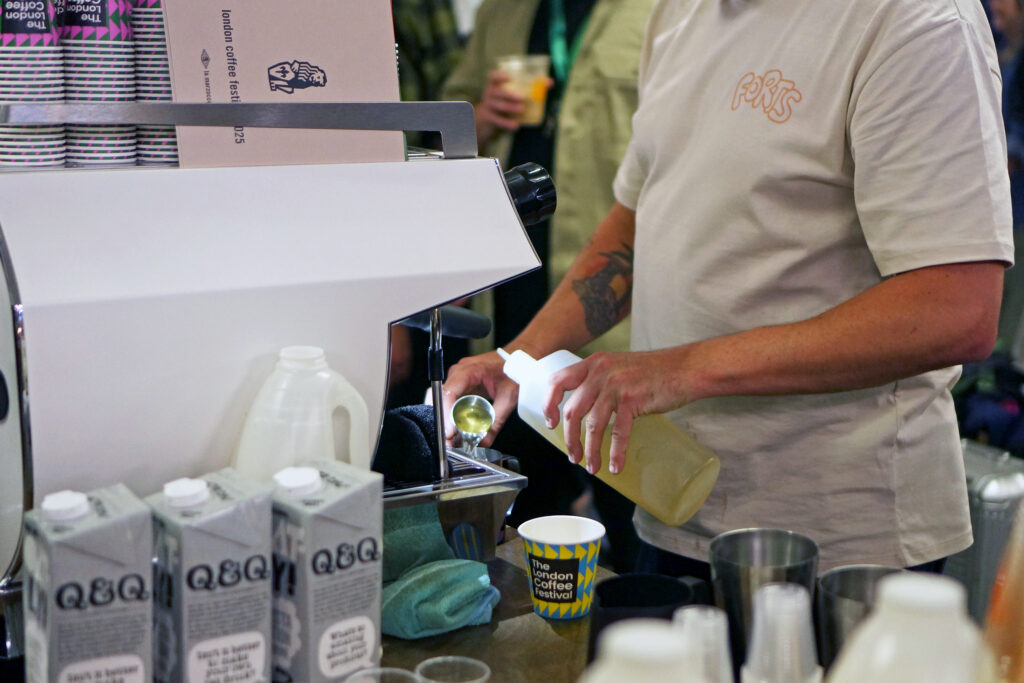
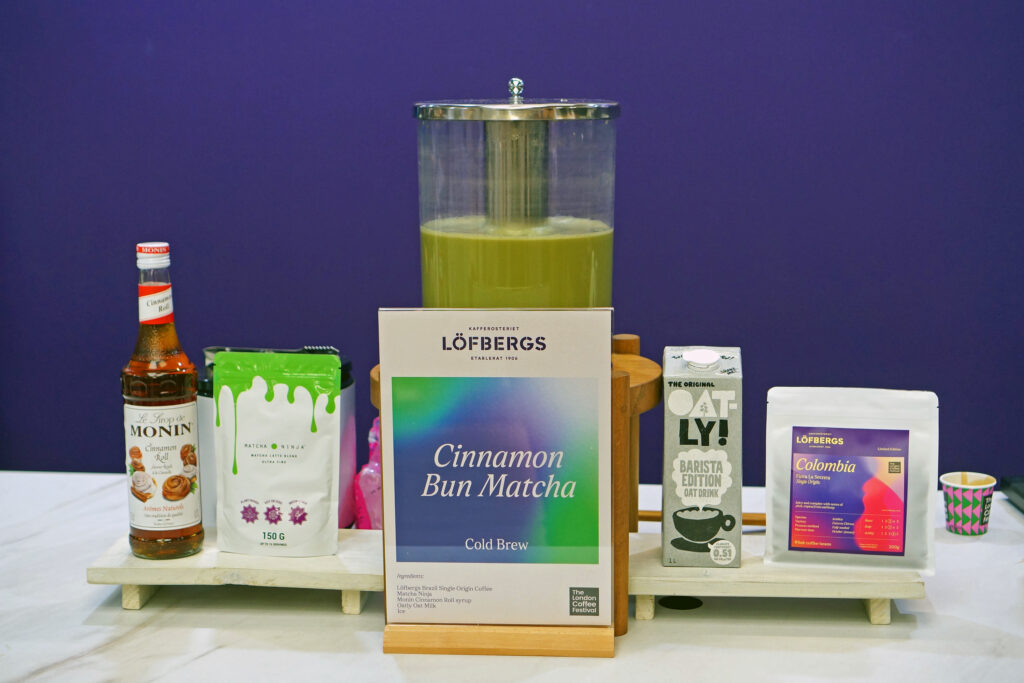
On my quest for signature serves, I sampled everything from the Margate-based Forts Cafe’s fig leaf iced latte to Allpress Espresso’s collaboration with creative agency Mr Lyan Studio, featuring tequila infused with decaf coffee, lemon, and blackcurrant. Across the festival, I noticed a particular focus on Asian ingredients in signature drinks—flavors like miso and ube were clear favorites.
Functional Coffee Is the Next Frontier
One line I heard repeatedly was coffee shops’ struggle to draw customers in the afternoon. How can cafes move beyond simple morning caffeine delivery—and offer additional drinking occasions throughout the day?
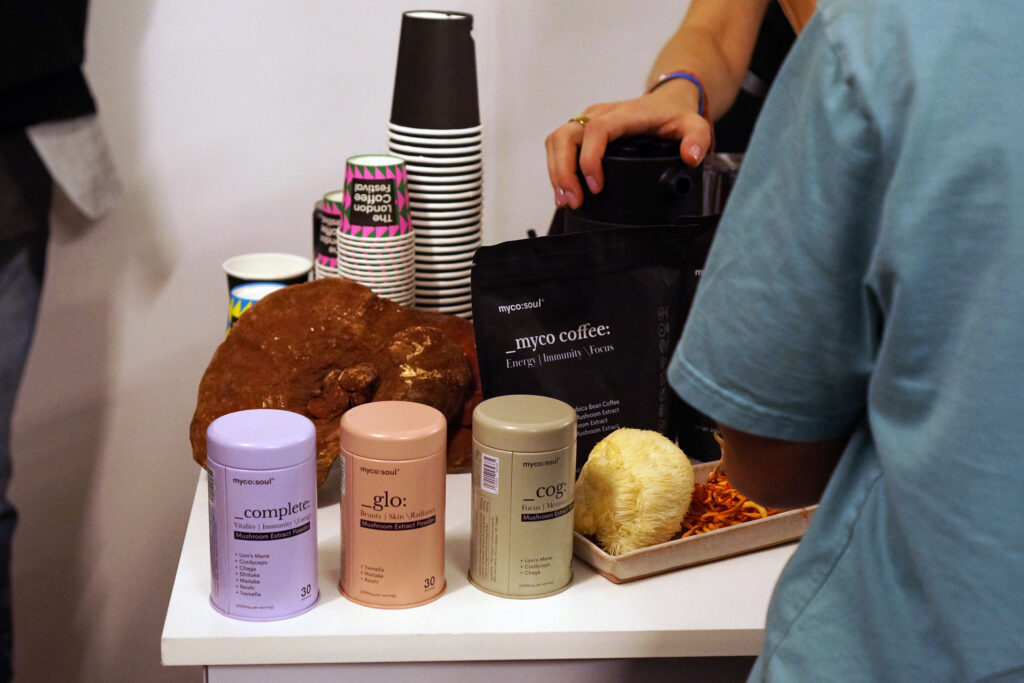
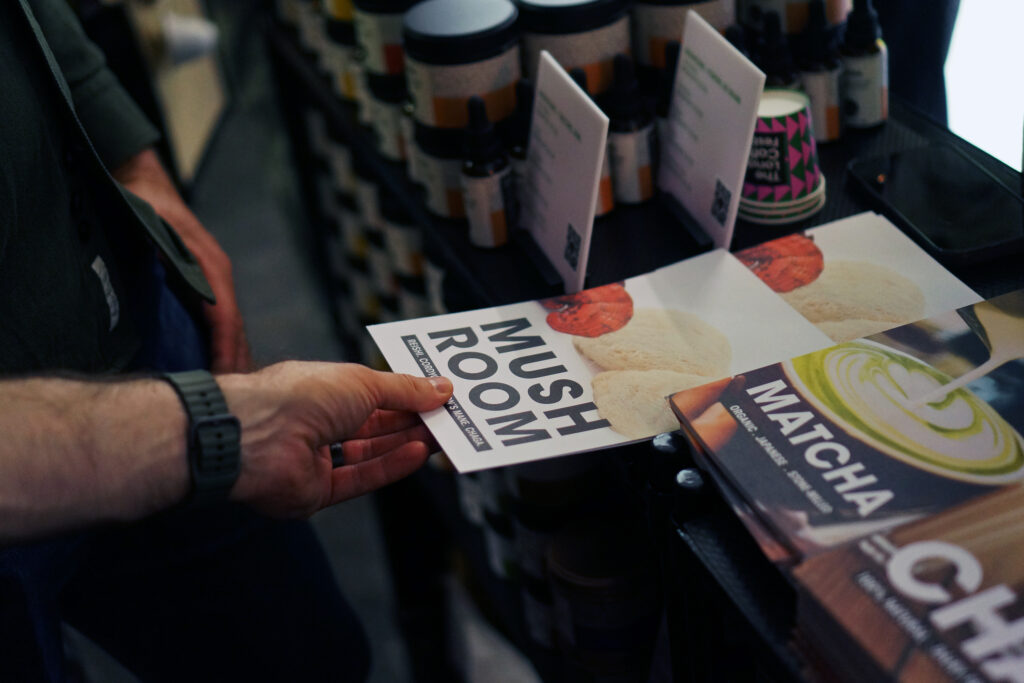
For many brands, the answer appeared to be stepping into the wellness space. I saw numerous functional coffee products, from additives offering “super mushroom power” to nootropic beverages claiming to “improve recall and cognitive performance.” Relatedly, a small subset of roasters promoting decaf coffee—including Decaf Nation, which offered a range of bright and complex coffees for visitors to try—made another case for all-hours, health-minded consumption.
Plant-Based Milk Is Ubiquitous
The ubiquity of oat milk isn’t exactly breaking news, but this year’s edition of the London Coffee Festival further reinforced its dominance. Leading brands like Oatly, Alpro, and Minor Figures were all well represented. Beyond the producers themselves, oat milk was also the default milk choice at numerous stands, from RTD matcha latte producers to international roasters and equipment brands serving special-edition drinks.
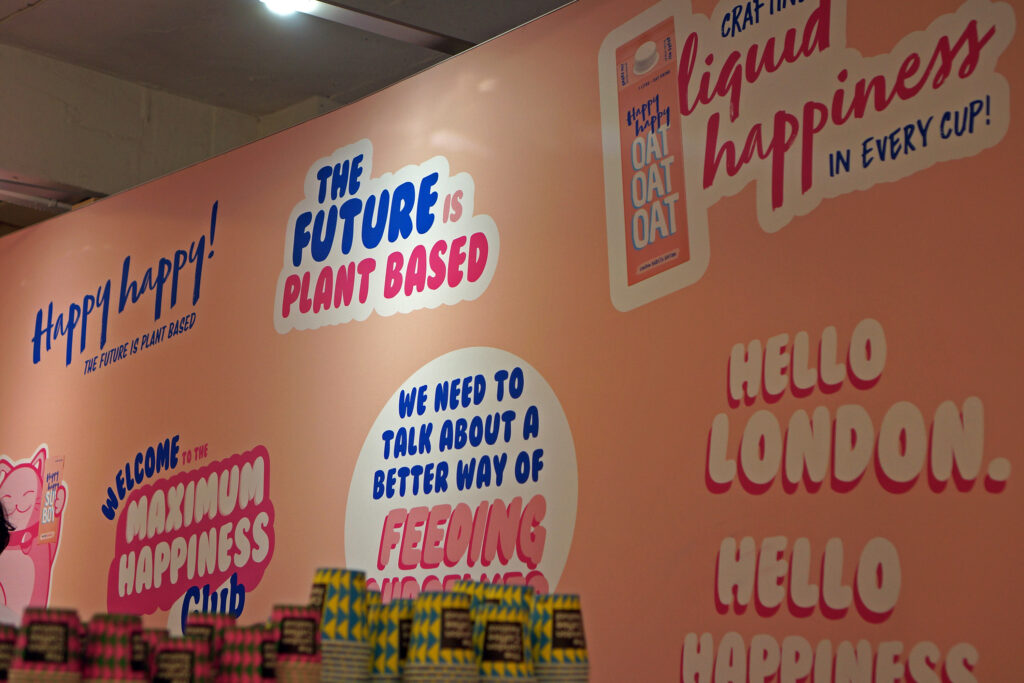
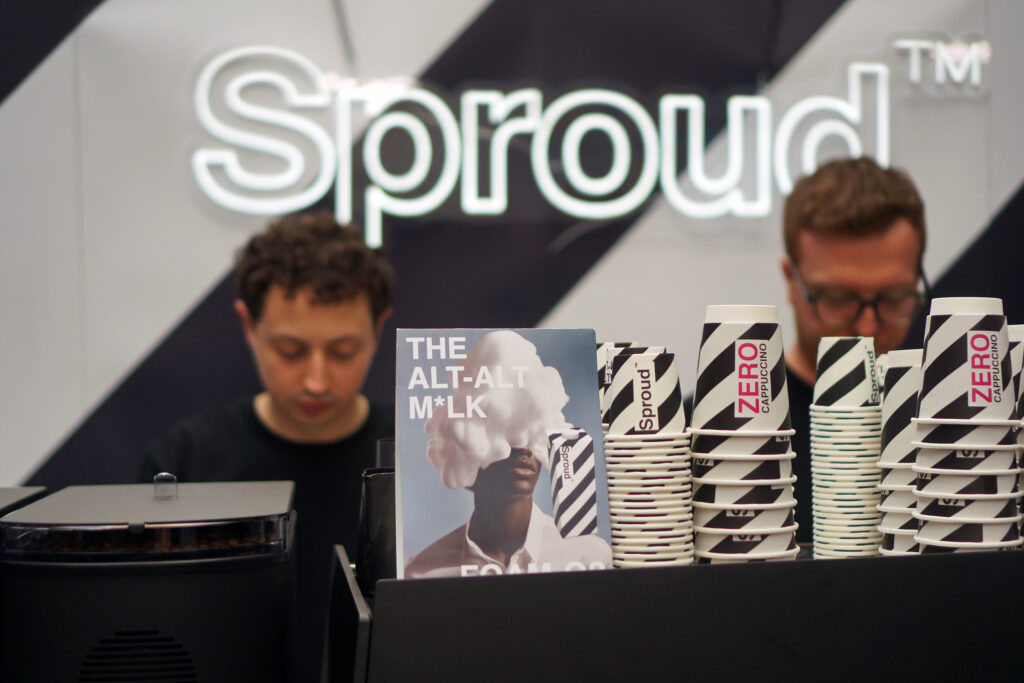
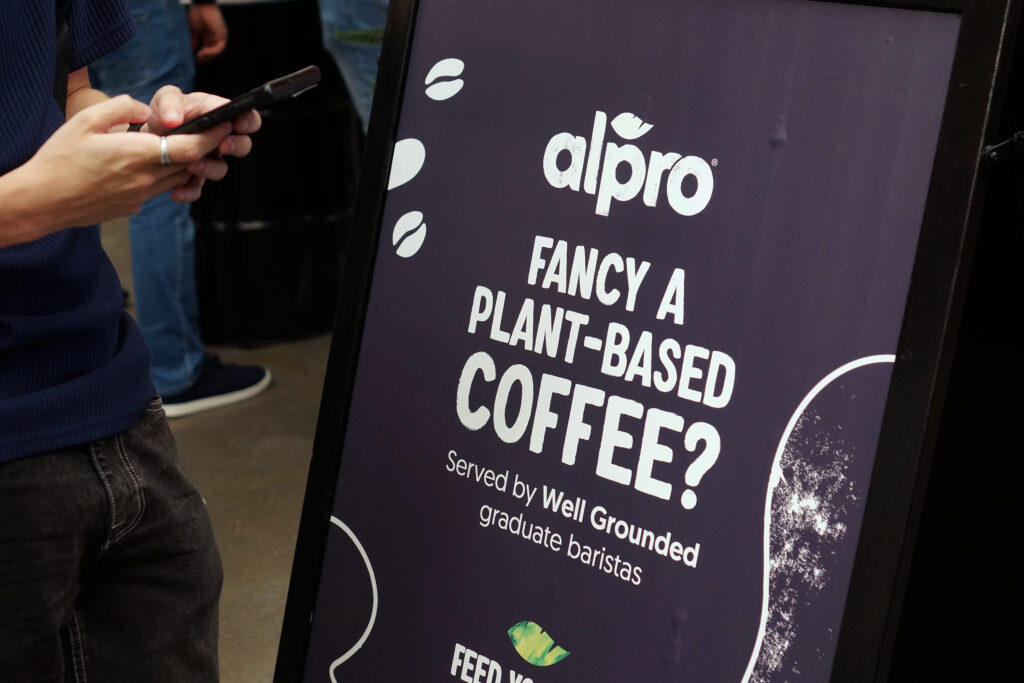
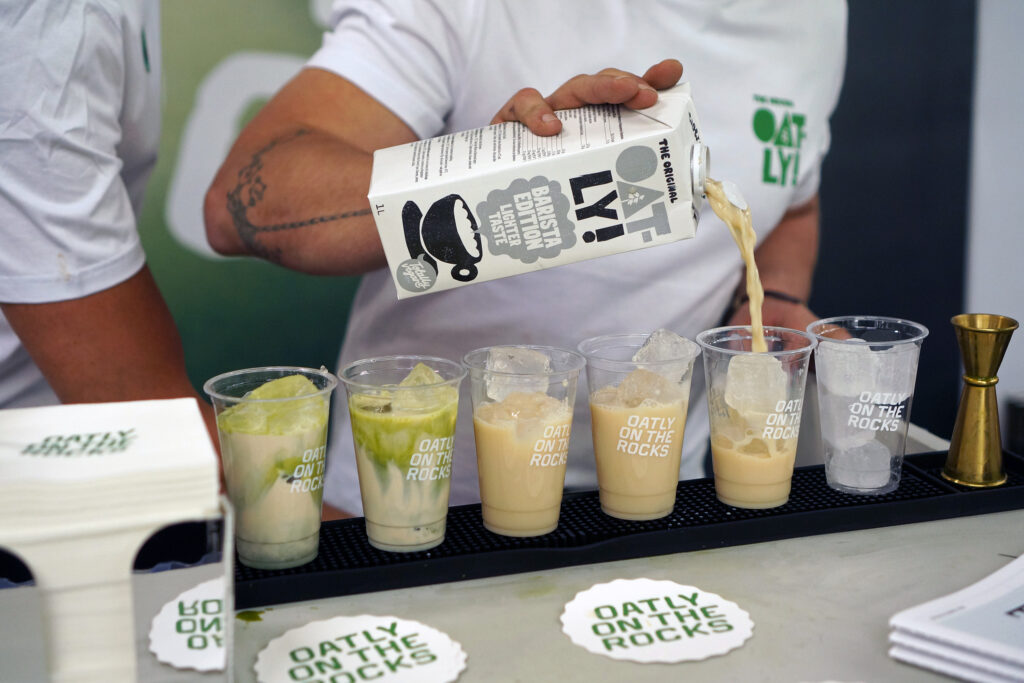
In such a large setting, oat milk benefits from being an accessible choice for drinkers with various dietary needs. However, while its supremacy was largely uncontested, I did see other plant-based options stepping into the ring.
Playful brands like Happy Happy Soy Boy gave soy milk a contemporary (and climate-conscious) makeover, for instance, while Sproud—which makes a line of flavored, unsweetened, and barista-oriented pea milks—showed the potential of more novel plant-based options.
We’ve Arrived at Peak Matcha
Ironically, one of the most inescapable trends at the London Coffee Festival was matcha. “Seven years ago, matcha was something that was [sidelined] at the festival,” Olivia Nottin, the founder of Matcha & Beyond, told me. No longer. Beyond the wide range of matcha producers represented, everyone from plant-milk brands to cafe chains were serving up vibrant green matcha drinks.

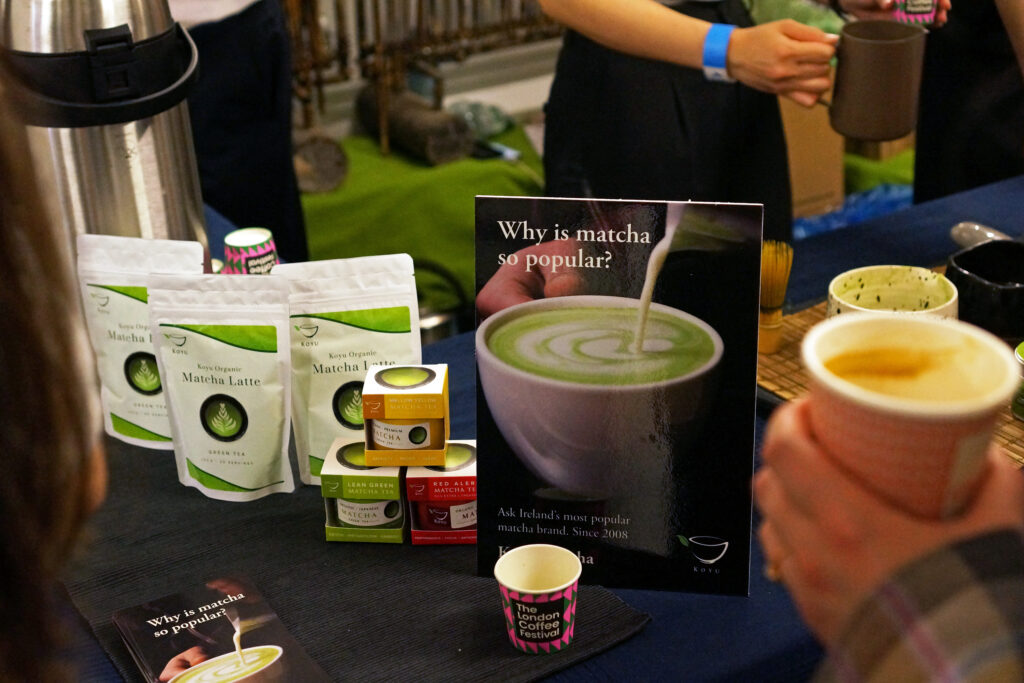
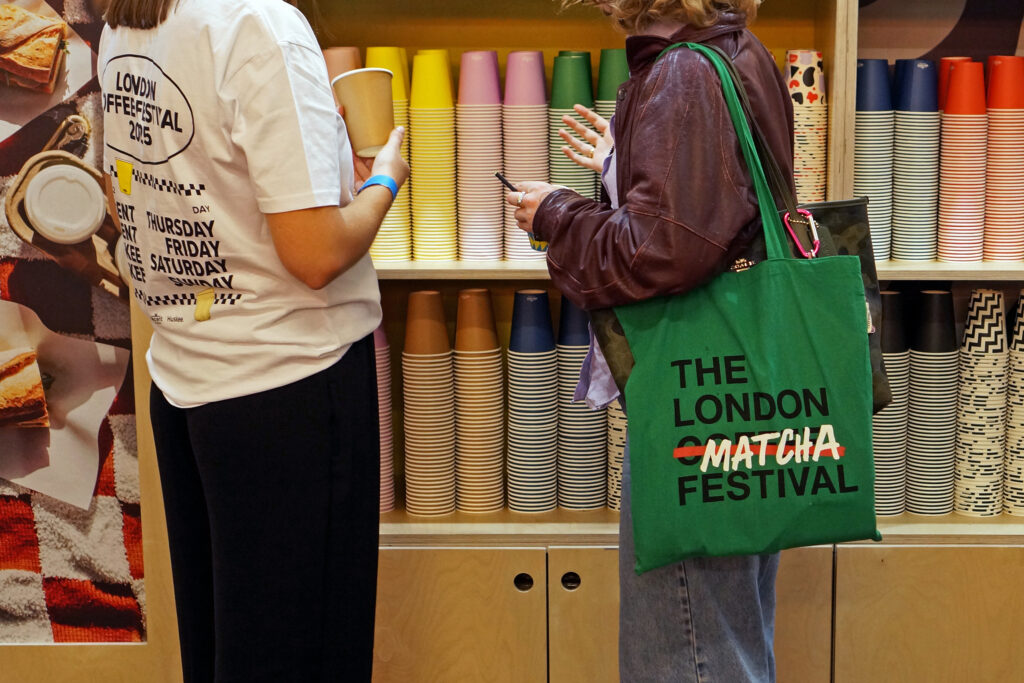
As drinks writer Annie Arriaga put it in a recent piece, “The demand for matcha from markets across the world, namely the U.S. and the U.K., is skyrocketing at unprecedented rates.” Fueling its ubiquity is the fact that it intersects with all four previous trends—it’s very often served with plant milks (and boldly flavored syrups), looks great on social media, and is embraced by wellness crowds who prize its slower-release caffeine.
So have we reached peak matcha? It was hard to avoid that impression at this year’s London Coffee Festival—or London Matcha Festival, as one playful tote bag design described it.



